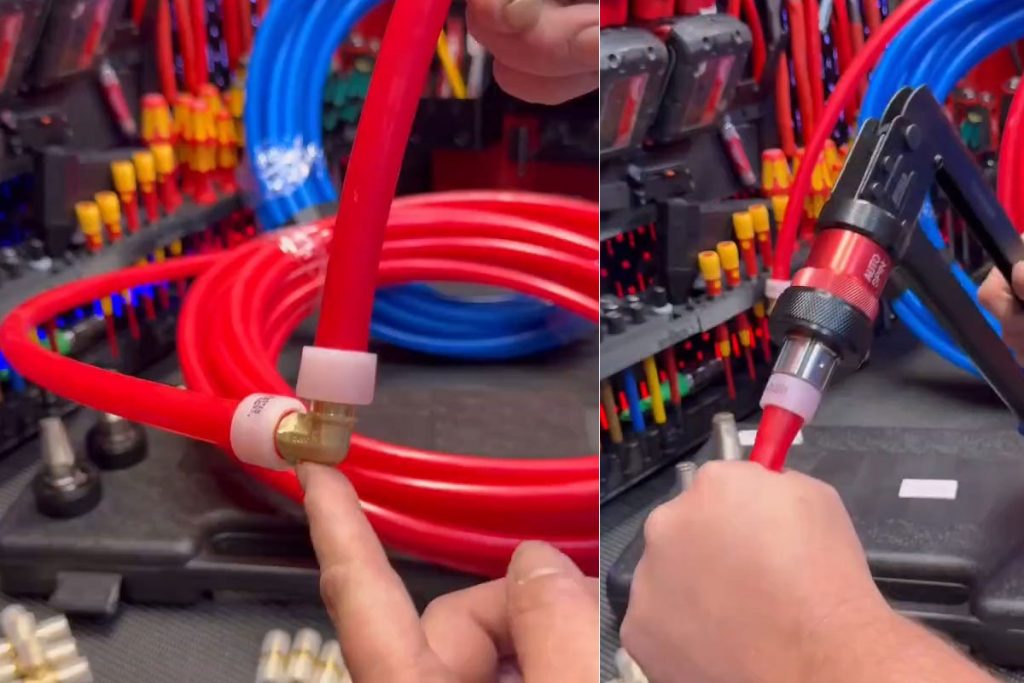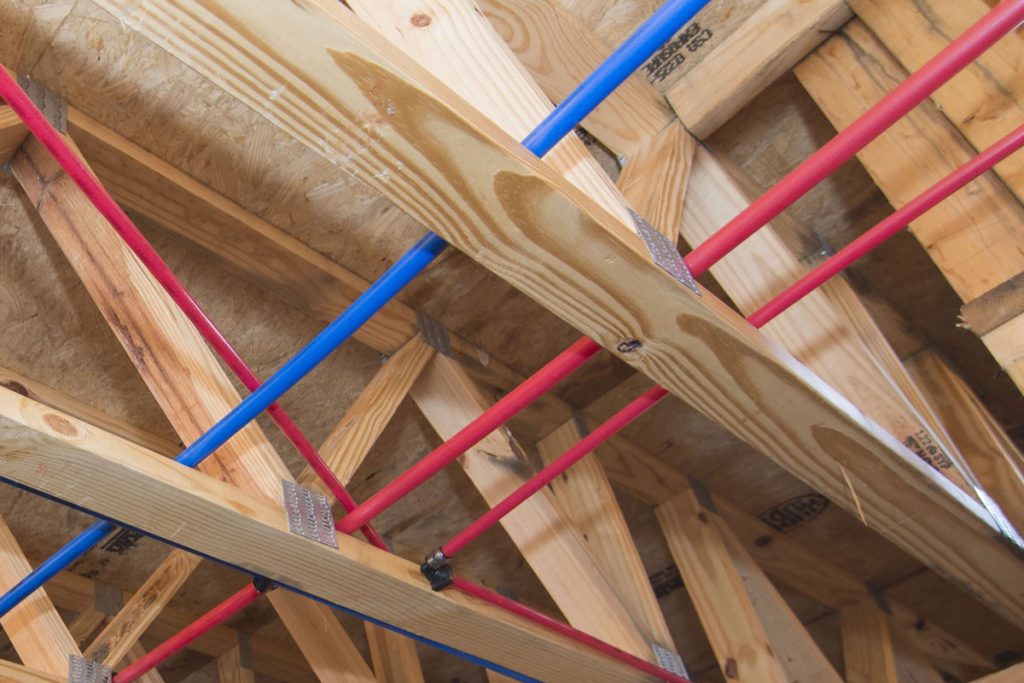PEX pipe fittings are widely used in both commercial and residential plumbing systems. They are durable, easy to install, cost-effective and resistant to corrosion. However, it is still important to think about how to choose the right materials and ensure compatibility between them. Polybutylene pipes used to be one of the most popular selections for plumbing systems. Still, their degradation under exposure to chlorine and high temperatures has come into consideration. This has made many homeowners and professional plumbers looking to replace or repair polybutylene systems with more durable and reliable materials, such as PEX pipes and fittings.
If you find yourself in this situation, you might wonder whether it’s possible to use PEX fittings on polybutylene pipes. The short answer is no, you may not. Although both materials share some similar properties, there are still distinct features that affect how they can be connected. This article will cover some relevant knowledge of PEX fittings and how to safely connect PEX fittings with polybutylene pipes. PlumbingSell provides a wide selection of PEX fittings for you to choose from. Discover more now.
Table of Contents
What Are PEX Fittings?
PEX fittings are one of the main components used in PEX plumbing systems, popular for both residential and commercial plumbing projects. They are mainly used as connectors between different components of the pipe system. They are known for their flexibility, durability and ease of installation. As PEX pipes become more popular in the plumbing industry, it’s also essential to choose the right fittings for each project. There are mainly three types of PEX pipes, PEX-A, PEX-B and PEX-C; you can find out more about the differences among them in our latest article here. When working with these different types of PEX pipes, it’s important to choose specific fittings for a leak-free and reliable piping system.
As with other plumbing components, PEX pipe fittings are available in various types, materials and designs, suitable for a wide range of applications. Here are the most commonly seen types of PEX fittings.
Types of PEX fittings
The types of PEX fittings are varied based on their unique function, we’ll cover the basic ones here to help you have a general understanding about their functions.
Crimp Fittings
Crimp fittings are one of the most common types of PEX fittings used for connection. They are simple to install and ensure a secure, leak-free connection. The connection is simply created by compressing a crimp ring over the end of PEX pipes. For proper installation, crimp rings are recommended to be used with PEX crimping tools. The majority of crimp rings are made of brass, with some made of poly.
Crimp fittings are secure and durable, which makes them a popular option for residential water distribution systems for both hot and cold water. However, crimp fittings are permanent fittings, which means that they are not recommended to be removed after installation.
Crimp fittings are secure and durable, which makes them a popular option for residential water distribution systems for both hot and cold water. But it is noticeable that crimp fittings are permanent fittings, this means that they are not recommended to be removed after installation.
Expansion Fittings
Expansion fittings, also known as PEX-A expansion fittings, are designed explicitly for PEX-A tubing systems. As PEX-A is the most flexible type of PEX pipes, they can shrink back to the standard size even after being expanded three times. However, PEX expansion tools are an essential requirement for installation; after stretching and widening the diameter of PEX-A pipes, you could insert PEX-A expansion fittings to the end of the pipes. After a short time of installation, the PEX tubing will shrink back down to its original size and create a secure seal around the expansion fittings.
PEX expansion fittings are also used as connection fittings between components. They are easy and quick to install and provide an extra secure and leak-free connection. The main drawbacks of these fittings are that they cannot be disconnected once in place and are slightly more expensive than crimp fittings.
Push-fit Fittings
Push-fit fittings are among the most user-friendly PEX fittings for installation, with no special tools required. They are the easiest and quickest fittings to install, and they are also capable of providing a secure connection. To install a PEX push-fit fitting onto the PEX tube, simply press it towards the end of the pipe, stopping when you feel the resistance as the pipe reaches the internal mechanism of the fitting.
Although there are no extra tools or accessories for installation, a specific removal ring is necessary when you are about to remove the PEX push-fit fittings. PEX push-fit fittings are generally ideal for DIY projects as they are easy to install and do not require additional tools, but they could be a bit expensive compared with other types of PEX fittings.
PEX Fittings and Polybutylene Pipe Compatibility
Polybutylene (PB) piping was commonly used for residential water piping in the last century. It usually comes in gray. Most new plumbing projects have switched to more modern materials for piping systems, such as PEX, CPVC or copper. However, polybutylene piping is still present. After decades of usage, you might consider swapping it for other materials like PEX piping, which is highly recommended.
However, PEX fittings are not directly applicable to Polybutylene applications. Polybutylene and PEX are made of two entirely different materials and their diameters are not measured the same way. For example, the 1/2 PEX pipe fittings might represent the diameter of PEX. In contrast, for 1/2″ polybutylene pipes, their diameter could be different. This means that you should not attach PEX fittings directly onto polybutylene pipes. There are transition fittings specially designed for connecting these two materials, which are mainly made of brass or other durable materials.
PEX-A pipe is typically the best replacement for polybutylene pipes because of its durability, flexibility and resistance to corrosion, especially in cold weather areas. However, PEX-A fittings are not applicable for polybutylene systems, so we do recommend looking for professional plumbers’ to help connect the two systems together. Suppose you have made up your mind about changing the entire polybutylene piping system to a PEX system. In that case, we’ve got a whole set of EFIELD PEX supplies to get you prepared for the huge renovation!
Conclusion
PEX pipe fittings have become a widely used component in the plumbing industry because of their durability, ease of installation, cost-effectiveness and various shapes for different functions. As plumbing technology evolves, many homeowners are seeking to replace outdated materials like polybutylene pipes with more reliable options like PEX. Therefore, it is important to note the method of connecting two different plumbing materials. Specific transition fittings might be available, but we recommend swapping to PEX systems for more long-term plumbing solutions.
Keep in mind that PEX fittings are not compatible with polybutylene pipes mainly due to the differences in materials’ properties and dimensions. But if you are looking to use PEX pipes to replace entire polybutylene systems, check out our EFIELD PEX pipes and fittings collection. If you have any other concerns regarding PEX fittings installation or maintenance, feel free to get in touch with us at any time.



